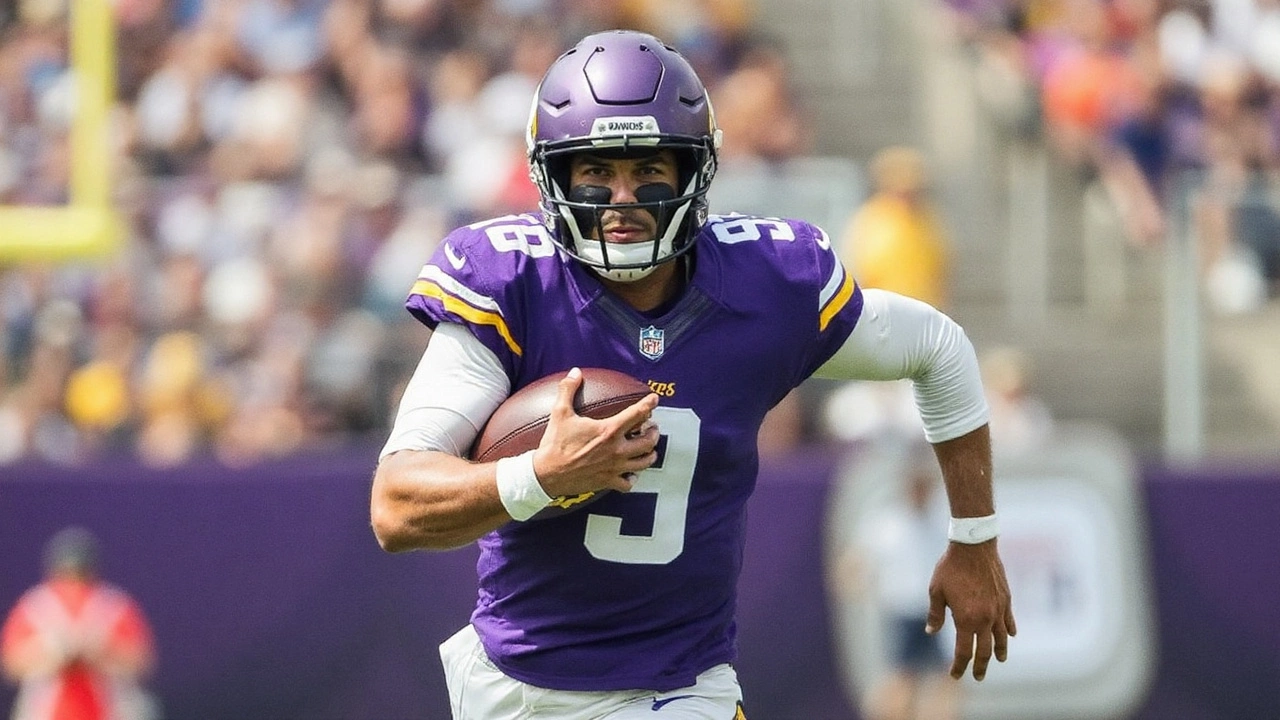
Year 7, a raised bar, and a head coach who keeps the main thing the main thing
He’s stepping into a seventh NFL season with a simple, demanding message for himself: be the best at the position, and be the best teammate in the building. That’s how T.J. Hockenson framed his 2025 goals in a recent sit-down with Vikings Entertainment Network. He didn’t hedge. He didn’t soften it. He wants the top spot among tight ends while keeping the locker room at the center of everything he does.
The timing of that mindset fits the Vikings’ moment. Under head coach Kevin O’Connell, Minnesota has leaned into a player-first, detail-obsessed approach that tries to marry high standards with clear communication. Hockenson pointed to that culture without fanfare: unity, accountability, and building trust on offense. None of that sounds flashy, but in practice it’s the difference between a third-and-7 conversion and a punt in December.
O’Connell’s imprint shows up in how the Vikings talk about offense. The emphasis is on clarity—what route depth means against certain coverages, how timing shifts with motion, when a hot route becomes a sight adjustment. Hockenson framed it as connecting the dots: everyone knows the talent is there; the gap is turning that talent into a rhythm that survives bad field position, crowd noise, and opponent adjustments.
He also knows what leadership looks like in the tight end room. It means being the extra set of eyes for the quarterback, the check-down when a play collapses, the trusted option on third down, and the hammer in the red zone. It’s subtle work—finding soft spots in zones, winning leverage off the snap, selling play-action with body language. Those little edges are where Hockenson plans to live this year.
There’s also an honesty to how he talks about the group. “It takes all 11 of us, not just one,” he said. That line might read like a cliché until you watch a play fall apart because the motion is late or the split is off by a yard. Minnesota’s best version of itself comes when the moving parts—the line’s set, the backs’ blitz pickups, the receivers’ spacing—lock together. Hockenson’s job is to be the connective tissue that makes it all function.
That’s why he’s kept his ambitions pointed but practical. He wants elite production, sure. But he keeps circling back to the day-to-day: the route depth that must be right, the release package that has to beat press, the timing that can’t drift. That’s where he sees the gap between being good and being great.

J.J. McCarthy, the Tennessee reps, and a trust build that can’t be faked
There’s no tiptoeing around it: the Vikings’ 2025 ceiling depends a lot on J.J. McCarthy. Drafted in the first round in 2024 and wiped out by a torn meniscus in the preseason, McCarthy spent his rookie year watching, learning, and rehabbing. Hockenson has spent chunks of this offseason with him in Tennessee, building a working language—route spots, timing windows, how a read changes when the defense brings pressure from the boundary.
Hockenson put McCarthy’s style in a familiar frame. He sees shades of Matthew Stafford—decisive, confident in his arm—and a bit of Kirk Cousins’ structure and timing. The message from McCarthy is consistent: be here on time, but also get open and trust that I’ll find you. That balance of rules and freedom is what most quarterbacks try to strike; hearing it early from a young passer is encouraging for any veteran pass catcher.
What impressed Hockenson wasn’t just the verbiage. It was the self-audit. McCarthy, he said, comes off the field with a handful of notes he wants to fix—four, five, six items he wants better by the next period. That kind of film-room honesty tends to travel well on Sundays. It’s how quarterbacks earn credibility with veterans who’ve heard every speech and seen every camp competition.
The work has been practical, not theoretical. On-field, that means building muscle memory around:
- Timing throws on outbreakers and option routes, so the ball is out before the break.
- Seam shots and high-lows against two-high looks, where Hockenson can stress the safeties.
- Scramble rules—how to uncover when McCarthy breaks the pocket to his right or left.
- Red-zone leverage: inside body position for slants and pivots, and when to sit versus carry across the face.
Those are the margins that decide drives. If the ball is out a tick earlier on an 8-yard out, it’s a first down and a fresh set of calls. If the tight end sits in the right window on a zone-beater, a play that looks harmless becomes a 15-yard chunk. Minnesota’s offense has the personnel to stack those small wins; the off-field work is about turning them into habits.
There’s another layer here: trust. A young quarterback has to see throws before he can throw them on time. That’s where a veteran tight end helps. He shows up in the expected window, presents his numbers, and turns a gray read into a green one. Hockenson’s value in this phase isn’t just catches—it’s predictability. It’s the snap-to-snap reliability that lets a young passer play faster.
McCarthy’s voice matters in that equation. Hockenson described a communicator who is direct without being rigid. “I want you here at this time,” is the starting point. The next sentence—“I’m going to trust you”—is what keeps the route alive when the picture changes after the snap. That’s a quarterback inviting the tight end to be a partner, not just a target.
Zoom out, and you see the outlines of the Vikings’ offensive identity. With precision from the tight end spot, route speed outside, and a run game that forces linebackers to step forward, O’Connell can layer concepts and keep defenses guessing. The plan isn’t to be cute; it’s to be disciplined enough that the illusion of complexity does the heavy lifting. When it works, the quarterback’s job gets simpler, not harder.
Hockenson’s respect for the fan base slipped in, too. He called Vikings supporters the best in the league and talked about bumping into them everywhere—even on a trip to Maine. That may sound like a throwaway line, but it tracks with how players feel the pulse of a season. When the building is loud and the belief is real, a third-quarter lull can turn in a hurry.
There’s urgency here, but it’s not frantic. It’s the urgency of a veteran who knows how short windows can be in the NFL. Hockenson isn’t selling a fairy tale about instant chemistry. He’s talking about reps in heat, film corrections in the afternoon, and the quiet work that ties it together. You can hear the subtext: after a lost year for a rookie quarterback, the Vikings want to hit spring and summer with a head start.
He also didn’t oversell his own role. Yes, he wants to be the best tight end in football. He also keeps coming back to the same point—“all 11.” That means the line’s communication against games and stunts. It means backs stepping up in protection. It means receivers running through routes so the coverage clears. When those jobs stack, a quarterback’s decisions get cleaner and the offense looks synced rather than stitched together.
For McCarthy, the next checkpoint is stacking healthy weeks and clean practices. For Hockenson, it’s turning offseason timing work into camp consistency. For O’Connell, it’s taking a roster with high-end pieces and translating that into a unit that solves problems together in real time.
That’s the story Hockenson is telling as he walks into Year 7: high standards, clear roles, and a young quarterback who’s already taking notes before the whistle stops echoing. The Vikings don’t need slogans. They need execution that travels. Hockenson’s betting that chemistry, built on purpose in the offseason, will do exactly that when the schedule starts to bite.


